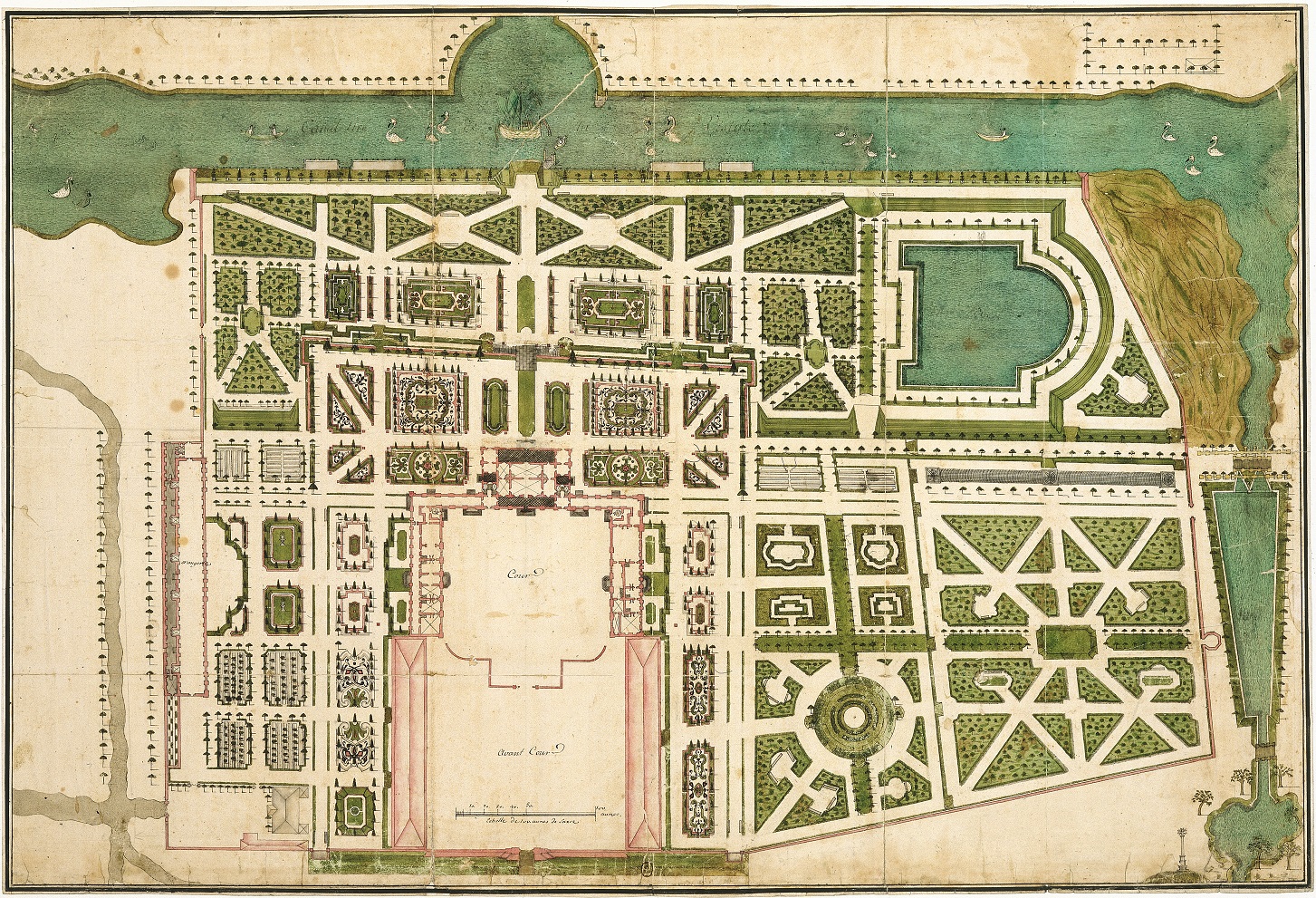
Early 18th century was a time of rapid growth for the Wilanów exotic plant collection. The Wilanów owner at the time, Cracow castellaness Elżbieta Sieniawska [1], financed the reconstruction of the orangery into a brick-walled structure designed by Giovanni Spazzio [2]. The architect directed the work in 1725–1726, and after his death the construction was completed by Giuseppe Giacomo Fontana [3]. The magnate also expanded the historical plant collection of King Jan III. According to the register compiled not long after her death on 27 June 1729, Wilanów housed 830 specimens of aromatic shrubs and herbs, citrus trees and other decorative and exotic plants. The collection was curated by Johann Georg Zeidler, a Saxony-born horticulturist employed back in the time of prince Konstanty Sobieski.
Said register of trees and shrubs is part of The Inventory of the Wilanów Italian Garden…, now kept at the Princes Czartoryski Library in Cracow. The manuscript contains an exceptionally precise list of plants exhibited at the orangery, and of those grown in the fig house soil and in the garden. Citruses were the most numerous in the former group, numbering as many as 305 specimens. The register listed: 6 bitter orange trees (Citrus × aurantium L.), 1 full-flowered orange trees (Citrus × aurantium flore pleno L.), 5 bergamot orange trees (Citrus × bergamia [Risso] Risso & Poit.), 3 pomelo trees (Citrus grandis [L.] Osbeck), also called “paradise apples” in the past, and 242 other orange trees. These may have also included species known in the contemporary Commonwealth: myrtle-leaved orange tree (Citrus × myrtifolia [Ker Gawl.] Raf.) and sweet orange (Citrus × sinensis [L.] Osbeck), mandarine (Citrus × reticulata Blanco), as well as trifoliate orange (Citrus trifoliata L.). The register also noted: 7 lemon trees (Citrus × limon [L.] Osbeck), 7 citrons (Citrus medica L.), as well as 34 large and small lemon trees. These may have been lemons and citrons, as well as contemporarily known key lime (Citrus × aurantiifolia [Christm.] Swingle) or lumia (Citrus × lumia Risso).
The Wilanów orangery collection also housed other exotic plants. Jasmines formed a major group among them. The 47 white-flowered specimens included Spanish jasmine (Jasminum grandiflorum L.) or common jasmine (Jasminum officinale L.), and the 11 yellow-flowered ones were Italian jasmine (Chrysojasminum humile [L.] Banfi) or winter jasmine (Jasminum nudiflorum Lindl.). There was also 1 Arabian jasmine (Jasminum sambac [L.] Aiton) in the collection, which bears navy blue fruits. The enigmatic single specimen of „Terkinuz Gdanska” was most likely the Sicilian sumac (Rhus coriaria L.), which was historically referred to as “Rhus terginus”. The register further lists: 88 bay laurel trees (Laurus nobilis L.), 3 boxwood trees (Buxus sempervirens L.), 9 Mediterranean cypress trees (Cupressus sempervirens L.), 11 Spanish gorse trees (Genista hispanica L.), 16 Yucca gloriosa bushes (Yucca gloriosa L.), 23 pomegranate bushes (Punica granatum L.) and 159 rosemary bushes (Salvia rosmarinus Spenn.). 7 trees, whose names are written illegibly, remain unidentified.
Herb plants included 9 wallflowers (Erysimum × cheiri [L.] Crantz), 44 clove pinks (Dianthus caryophyllus L.) and 75 specimens of a “rose herb”. These may have included many species grown in the Commonwealth in the 17th and 18th centuries, such as basil (Ocimum basilicum L.), St. John's wort (Hypericum perforatum L.), hyssop (Hyssopus officinalis L.), cumin (Carum carvi L.), coriander (Coriandrum sativum L.), valerian (Valeriana officinalis L.), marjoram (Origanum majorana L.), lovage (Levisticum officinale W.D.J.Koch), lemon balm (Melissa officinalis L.), peppermint (Mentha × piperita L.), borage (Borago officinalis L.), chamomile (Matricaria chamomilla L.), sage (Salvia officinalis L.), and thyme (Thymus vulgaris L.).
393 bushes of common grape vine (Vitis vinifera L.), as well as 34 apricot trees (Prunus armeniaca L.) and 22 peach trees (Prunus persica [L.] Batsch) also grew in the Wilanów gardens. 32 almond trees (Prunus amygdalus Batsch), 9 white mulberry (Morus alba L.) or black mulberry trees (Morus nigra L.), as well as 48 fig trees (Ficus carica L.) were grown in the fig house.
[1] Elżbieta Helena Sieniawska née Lubomirska (born ca. 1669, died 21 March 1729) – Polish aristocrat, wife to the Voivode of Bełż and Grand Crown Hetman Adam Mikołaj Sieniawski, owner of the Willanów palace from 1720 to 1729.
[2] Giovanni Spazzio (died 29 July 1726 in Wilanów) – architect from Italy. Designed and conducted the construction of numerous sacral and secular buildings, including the palaces in Wilanów, Łubnie, Oleszyce and Wysock.
[3] Giuseppe Giacomo Fontana (born 21 June 1676 in Mendrisio, died after 1738) – architect from Italy. Was a student of Giovanni Spazzio and participated in the implementation of his designs. Authored the designs for the Bieliński palaces in Warsaw and Otwock Wielki, the Kozłówka palace and the Wilanów palace.
This text is part of the implementation tasks of the Author’s doctoral thesis Technical, aesthetic and management standards of restoring an exotic plant collection in historic gardens exemplified by the Wilanów residence, conducted in cooperation with Cracow University of Technology and the Museum of King Jan III’s Palace at Wilanów, financed by the Ministry of Education and Science under the 5th edition of the “Implementation doctorate” programme.
The tree and brush registry was compiled on the basis of a comparative analysis with historical treatises on botany, agriculture, horticulture and ethymology:
We would like to inform that for the purpose of optimisation of content available on our website and its customisation according to your needs, we use information stored by means of cookies on the Users' end devices. You can control cookies by means of your Internet browser settings. Further use of our website without change of the browser settings means that you accept the use of cookies. For more information on cookies used by us and to feel comfortable about this subject, please familiarise yourselves with our Privacy Policy.
✓ I understand